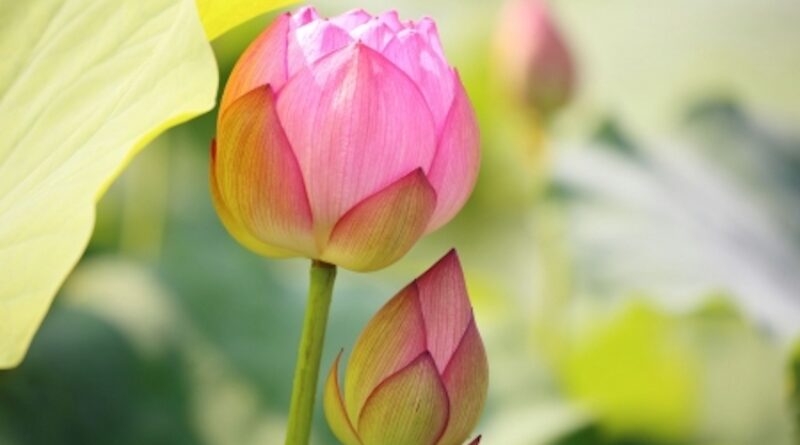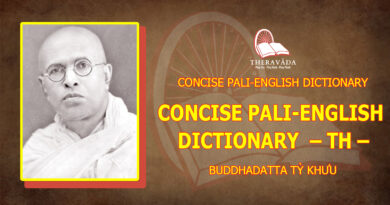ESCAPING FROM MARA
ESCAPING FROM MARA
Ajahn Pasanno described the four major modes of clinging. Recognizing where the mind is clinging, the quality of clinging, and the capacity of the mind to grab hold of things and get stuck on them is extremely important as we learn to live a life which is peaceful, skillful, wise and harmonious. The next step then is to follow through by letting go of that which is being clung to. So much of our practice day-to-day — in our livelihood, in the people we live with, in our meditation — has to do with letting go. It’s Buddhist jargon that we repeat over and again: Letting go, letting go, letting go.
Even though there is a necessary, profound emphasis on clinging, we can come to assume that it is the basic nature of our being: Fundamentally, we are the grip incarnate. But this is a mistaken way of viewing things, of not looking at the situation in a full, comprehensive, accurate way. While we might feel like every time we look at our mind it is grasping at something, in a way that is just circumstantial evidence. What we find as we train the mind and look into its ways more and more consistently and effectively is that there are also moments of letting go — states of nonclinging, bliss, relief and delightful peace.
We can think of those moments of peace as the islands of goodness, the lotus flowers arising out of the muddy bottom of our minds, the fundamental nature of which seems to be a dark rot. However, we also begin to see that although clinging is an extraordinarily strong habit, it’s also something which arises. It comes into being. It’s an impermanent, unstable, dependently originated quality that arises due to causes. It’s not there all the time.
Once, after a monk called Vakkali had died, the Buddha said,”Monks, do you see that strange smoky haze going here and going there? That’s Mara, the evil one. Do you know what he’s doing? He’s looking for the consciousness of Vakkali but can’t find him anywhere. Why can’t Mara find him? Because Vakkali died as a Noble One, and his consciousness is not established in any realm.”Vakkali escaped. And this is a capacity we all have, to escape, to let go. The Buddha deeply encouraged Dharmic escapism: Ours is a burning house: “Everything is on fire, run for the exit!” But sometimes people see escaping as life-negating. Escapism is a bad thing, right? We like the living world and the people and creatures and trees and sky, even the bad weather and clouds and the nighttime.
If we look more closely and contemplate, however, we see that this is a superficial view of escaping or letting go. What is life really like in the moment of letting go — when we are in the presence of something that we long for but the heart recognizes we don’t have to have? Or when we are in the presence of someone who is angry with us and we feel compassion for them without fighting back or taking it personally. That’s what is meant by escaping from the burning house. It’s not disconnecting, it’s not shutting down, it’s not taking refuge in some sort of numbed-out emptiness of “not me, not mine, doesn’t exist, everything is empty, it’s your problem.” It’s not a walling off of the heart and calling it liberation — like locking ourselves into a safe and calling it emptiness. Instead, there’s a genuine attunement, but there’s no dukkha created around it. It’s the heart resting in vijja, in true knowing, true mindfulness.
In the ancient Indian epic the Ramayana, the hero and the heroine are named Rama and Sita. They are the ideal couple — the beautiful and faithful, virtuous woman and the handsome, noble prince — and they get caught up in a great tangled plot together. What occurred to me is that there is a Buddhist version of the perfect couple: Rama is an anagram of Mara, and Sita is an anagram of sati. On the one hand you have Mara, death and delusion, that which clings to the sensual, to thought and feeling, to the conditioned world. Then there’s sati, mindfulness, the quality of true awareness that is an attribute of the unconditioned. Mara’s searching for Vakkali is the mind that sees things in worldly terms. It can’t recognize the unconditioned. No matter where Mara looks, he’ll never find the unconditioned because he’s looking on the basis of the conditioned. If the heart is clinging, then the unconditioned is invisible. It’s only when the heart lets go of the conditioned — when there’s nonidentification with the loved and the hated, the pleasant and the painful — that there’s true abandonment and liberation. In letting go, the unconditioned becomes apparent and the heart awakens to the unborn, the unformed, the undying.
* Adapted from a Dhamma talk given on February 28, 2004.
-ooOoo-
Source: Budsas.org







